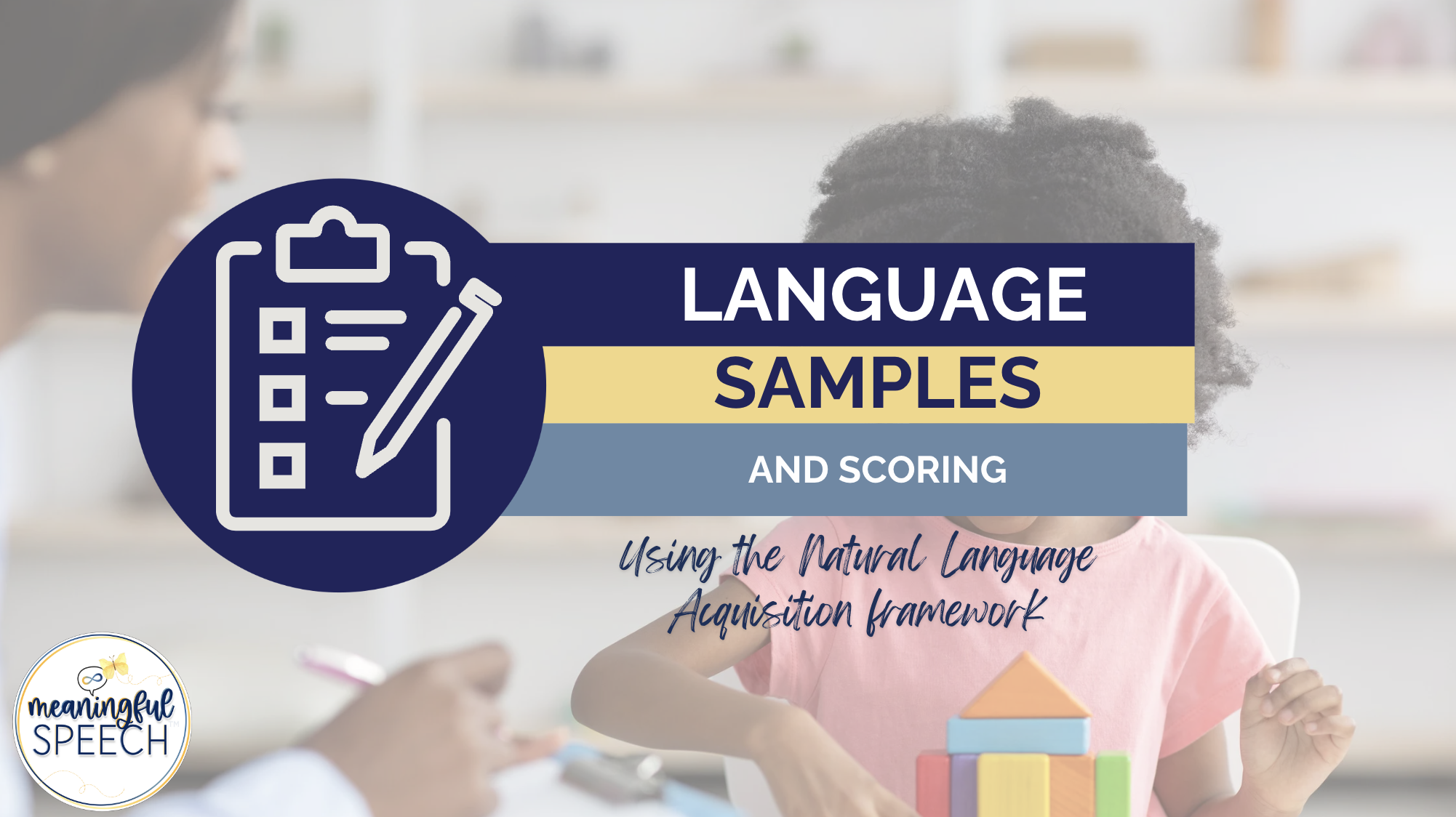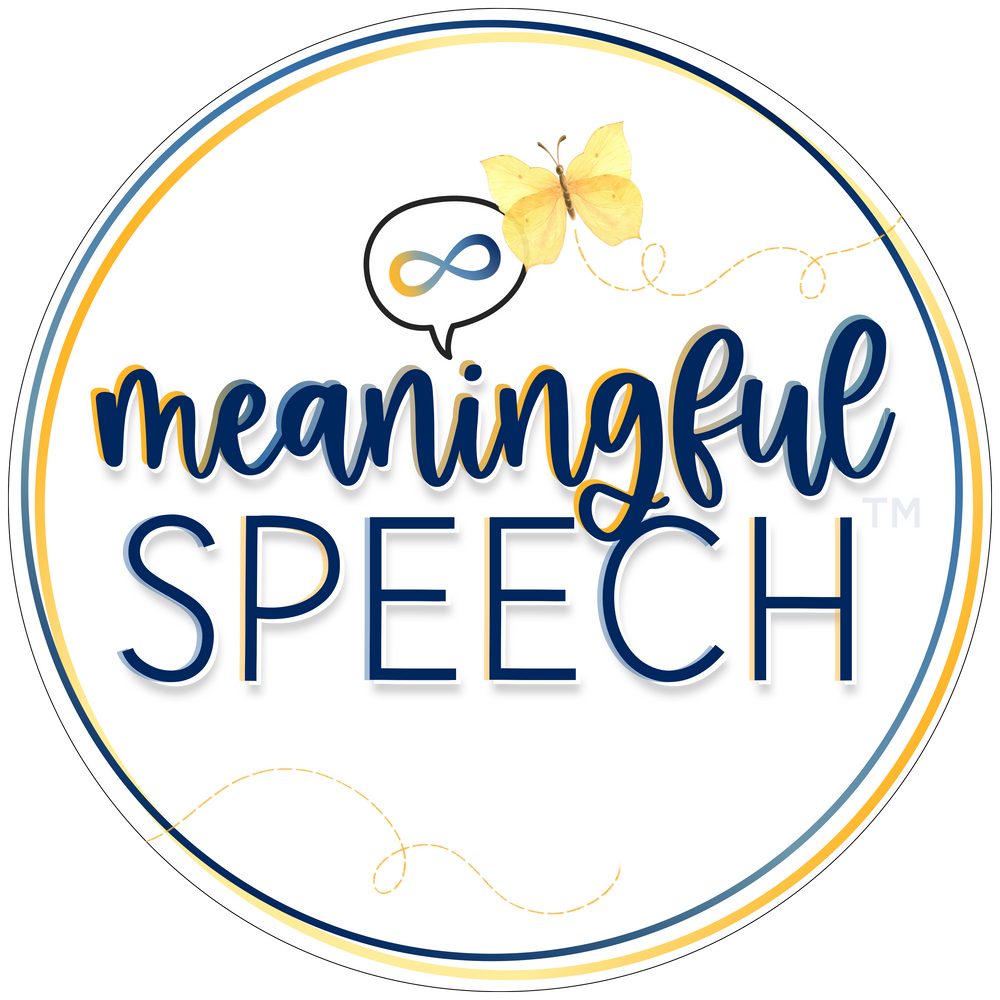Data and Child-Led Therapy
Apr 09, 2025
One of the most common questions we get is how to take data to create goals and show progress with our gestalt language processors. Depending on the setting you’re in, you likely have to show data in IEPs, progress reports, and/or to insurance to qualify for services or continue services. When supporting gestalt language processors, we want to use child-led therapy. We can take data during child-led evaluations and therapy sessions. We do this by collecting spontaneous language samples.
First, let’s review the stages of gestalt language development
Stage 1: Delayed Echolalia
Scripting whole gestalts, single word gestalts, and/or intonationally defined strings of language from people, media, or books.
Example: "There's a monster at the end of the book!"
Stage 2: Mix and Match Stage or “Trimming down” (Partial Gestalts)
Mitigating larger Stage 1 gestalts into smaller chunks and also mixing and matching parts/chunks of Stage 1 gestalts into semi-unique utterances.
Examples #1 (mixing of two partial gestalts): "There's a monster + under there" = There's a monster under there.
Example #2 (Trimming down): "There's a monster."
Stage 3: Single Words and Two-Word Combinations
Breaking the script down to one word unit and/or making a new noun combination.
Example: "monster", "scary monster", "monster red"
Stages 4-6: New Original Phrases or Sentences with Beginning Grammar, More Advanced and Complex Grammar
Putting word units together to make novel phrases or sentences. At Stage 4, children are using beginning grammar. At stages 5-6, children begin using advanced and complex grammar.
Examples: “The monster goed under” (Stage 4) “The monster can’t get out”
(Stage 5), “Shouldn’t he have come out from under the bed by now?” (Stage 6).
So, how do we take data for gestalt language processors?
We collect data by taking language samples! You will use language samples as your data during child-led evaluations to determine what stage of gestalt language development a child is currently in and what your goals for therapy will be. Language samples will also be used as your data during your child-led therapy sessions to determine progress. We score spontaneous language samples using the Natural Language Acquisition (NLA) framework (Blanc, 2012).
During therapy sessions, we might take shorter (e.g. 5-10 utterance language samples and score those to show progress towards goal(s) and support your plan moving forward. During evaluations, language samples need to be much longer. You want a minimum of 50 utterances or 12 minutes of language to score.
What does a spontaneous language sample mean?
A spontaneous language sample is collected in a natural, child-led environment that includes items or activities that are of interest to that child. We want to collect language that is truly spontaneous, meaning that it is not prompted by questioning, imitation, or expectation of a response. Instead, we are limiting our conversational turns and when we do take a turn, we’re using declarative language (commenting and narrating) and affirming the child’s language. When scoring using the Natural Language Acquisition (NLA) framework (Blanc, 2012), any language that is prompted or that was previously taught remains unscored. Want more information on taught vs. natural language? Check out our past blog post here.
Example of a short sample
This is a sample from a 4-year old gestalt language processor that is mainly in the early stages of gestalt language development...
- Gotta go home (1)
- Pigs say oink (1)
- Blue (1)
- Green (1)
- Orange (1)
- Let’s go home (2)
After scoring this short language sample, we got the following percentages for each stage: The child is in Stage 1 83% of the sample and Stage 2 17% of the sample. This data can be reported in IEPs, progress reports or to insurance to show how language is changing over time. Please note- this is a short sample for this blog. We do not recommend calculating stages and percentages from such a small assessment sample.
Ideas for collecting language samples
Here are some of our top tips for collecting language samples during evaluations or therapy sessions.
-
Use our Gestalt Language School-Based & Private Practice Intake Forms. These forms include language sample recording forms and instructions for use.
-
Use a recording device (e.g. phone, voice recorder) to audio or video record sessions to score at a later time and allow yourself to stay present. Always make sure you have permission to record the child.
- Use your phone to quickly type in utterances you hear in your notes app.
- If you prefer pen to paper, use a small whiteboard or keep a notebook open nearby to quickly jot down the utterances you hear and score them at a later time.
- Use software like Google Sheets or Microsoft Excel to input your language samples. This will allow you to easily track the child’s language over time and share/collaborate with other members on their team. You can also easily search through past samples and look at previous utterances to help you with your scoring.
Want More Support with Scoring?

Analyzing language samples for gestalt language processors requires an understanding of the NLA framework. If you’d like more guidance, check out our newest webinar with Meaningful Speech team member Katie Arnold.
This webinar discusses:
- A quick review of the stages of gestalt language development
- How to prepare for taking spontaneous language samples
- Marge Blanc’s Natural Language Acquisition (NLA) Guidelines
- A deeper look at each NLA guideline
- Scoring vs. analyzing language samples
- “It all depends” - Why context and history matter
- Practice scoring and analysis
- Stage 1 vs. Stage 3
- Stage 2 vs. Stage 4
A live question and answer will take place on April 22nd at 5:30 PT/ 8:30 ET. If you cannot make the live question and answer, it will be recorded and uploaded for your viewing.
For more information on the webinar click HERE.
